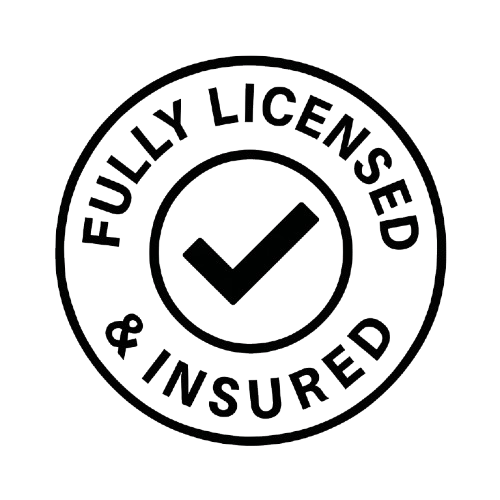Tree Surgeon vs. Arborist: What’s the Difference and Why It Matters

Trees are more than just elements of our landscape; they are vital to our ecosystem and contribute to the beauty and health of urban environments like New York City. When it comes to caring for trees, you might encounter two types of professionals: tree surgeons and arborists. While their roles may seem similar, they have distinct responsibilities and expertise. Defining the Roles: Tree Surgeon and Arborist What Is a Tree Surgeon? A tree surgeon, often referred to as a tree care technician, specializes in the physical maintenance and removal of trees. Their primary responsibilities include pruning, trimming, cutting down trees, and removing stumps. They are skilled in using equipment like chainsaws, cranes, and chippers to perform their tasks safely and efficiently. Tree surgeons are essential when you need to address immediate physical issues with your trees, such as removing dead or hazardous limbs or clearing fallen trees after a storm. What Is an Arborist? An arborist, on the other hand, is a professional trained in the science of arboriculture, which is the study of trees, shrubs, and other perennial woody plants. Arborists focus on the overall health, growth, and preservation of trees. They diagnose diseases, assess tree health, and develop comprehensive care plans to promote longevity and vitality. Services provided by arborists include soil analysis, pest management, fertilization, and strategic pruning to encourage healthy growth patterns. Education and Certification For Tree Surgeons and Arborists Tree Surgeons While formal education isn’t always required, many tree surgeons gain their skills through vocational training programs and on-the-job experience. They often hold certifications in specific skills like climbing and operating heavy machinery. Safety training is a critical component of their education due to the hazardous nature of their work. Arborists Arborists typically have a more extensive educational background in tree biology and ecology. Many hold degrees in forestry, horticulture, or environmental science. Professional arborists often seek certification from organizations like the International Society of Arboriculture (ISA), which requires passing comprehensive exams and committing to ongoing education. When to Hire a Tree Surgeon You should consider hiring a tree surgeon when: Immediate Removal Is Needed: If a tree poses a safety risk due to damage or disease, a tree surgeon can safely remove it. Pruning and Trimming: For aesthetic purposes or to remove obstructive branches, tree surgeons can perform precise cuts. Storm Damage Cleanup: After severe weather, they can clear fallen trees and debris promptly. When to Consult an Arborist You should consult an arborist when: Tree Health Assessment: If you’re concerned about the health of your trees, an arborist can diagnose issues and recommend treatments. Long-Term Care Plans: For ongoing maintenance and care, arborists can develop strategies to ensure your trees thrive. Planting and Transplanting: They advise on the best species to plant in specific locations and the proper techniques for transplanting. Why the Distinction Matters Choosing between a tree surgeon and an arborist depends on your specific needs. Hiring the right professional ensures that the job is done correctly and safely. For instance, employing a tree surgeon for tree removal without understanding the underlying health issues could lead to unnecessary costs or loss of valuable trees. Conversely, consulting an arborist when immediate physical work is required might delay urgent actions. Professional tree care helps to: Prevent Property Damage: Regular maintenance can prevent branches from damaging property or power lines. Promote Safety: Removing hazardous trees or limbs reduces the risk of injury to pedestrians and property. Enhance Property Value: Well-maintained trees can increase the value of your property and improve curb appeal. Support Urban Ecology: Healthy trees support local wildlife and contribute to a balanced ecosystem. Making the Right Choice for Your NYC Trees Before hiring a professional, assess your needs: Immediate Physical Work Needed? Consider a tree surgeon. Concerned About Tree Health? Consult an arborist. Both Physical Work and Health Assessment? You might benefit from a company that offers both services. Comparison of Tree Surgeon and Arborist Services Service Tree Surgeon Arborist Expertise Ideal For Cost Tree Removal Expertise in safe removal May consult but not primary role Tree removal, emergency situations $500 – $3000 Health Assessment Limited In-depth analysis and care plan Diagnosing diseases, health checks $100 – $500 Pruning and Trimming Structural trimming Health-focused pruning Reducing size, aesthetics $200 – $1000 Disease Treatment May remove diseased parts Comprehensive diagnosis and treatment Treating or preventing diseases $100 – $1000 depending on treatment Soil Management Not typically involved Expertise in soil health and care Fertilization, improving soil quality $100 – $500 depending on the service Contact Us for Expert Tree Care Services At NYC Tree Pro, we offer comprehensive tree care services tailored to your needs. Our team includes both skilled tree surgeons and certified arborists who work together to provide exceptional service. Whether you require immediate tree removal or a long-term care plan, we’re here to help. Contact us today to schedule a consultation.
The Challenges of Tree Trimming and Pruning in Tight NYC Spaces

Tree care in New York City presents unique challenges, particularly when it comes to trimming and pruning. The city’s densely packed buildings, narrow streets, and small backyards require a specialized approach to ensure that tree care is done safely and effectively. Navigating Tight Spaces One of the primary challenges of tree trimming in NYC is accessibility. Trees often grow in confined spaces, such as small backyards, along narrow streets, or close to buildings. This limited space can make it difficult to position ladders or bring in heavy equipment. Additionally, the proximity of buildings, vehicles, and power lines increases the risk of property damage or personal injury during tree trimming. To navigate these tight spaces, tree care professionals must be highly skilled and use specialized equipment designed for urban environments. Techniques such as rope and harness systems allow arborists to access hard-to-reach areas without the need for large machinery. This not only ensures safety but also minimizes disruption to the surrounding area. Techniques for Effective Trimming and Pruning in NYC Given the constraints of the urban environment, effective tree trimming and pruning require careful planning and execution. Here are some of the key techniques used by professionals: 1. Use of Pole Pruners and Compact Tools: In tight spaces, traditional saws and pruners may be too bulky to maneuver. Instead, arborists use pole pruners, which allow them to reach high branches without the need for a ladder. Compact chainsaws and hand pruners are also essential for making precise cuts in confined areas. 2. Strategic Pruning: When trimming trees in urban areas, the goal is often to reduce the tree’s size while maintaining its health and aesthetics. Strategic pruning involves selectively removing branches to thin the canopy, reduce wind resistance, and prevent overgrowth. This technique helps to keep the tree balanced and reduces the risk of storm damage. 3. Cabling and Bracing: For trees that are at risk of splitting or losing limbs due to their location, cabling and bracing can provide additional support and involve installing flexible cables or rigid braces within the tree to stabilize its structure and reduce the likelihood of branch failure. 4. Minimizing Disruption: In NYC, tree trimming often takes place in busy residential or commercial areas. To minimize disruption, arborists may schedule work during off-peak hours or use noise-reducing equipment. They also take care to protect nearby structures and landscaping from debris and damage. 5. Safety Precautions: Arborists use personal protective equipment (PPE) such as helmets, gloves, and eye protection to reduce the risk of injury. They also ensure that the work area is secured and that all equipment is in good working order. Common Risks When Trimming Trees in Tight Spaces Damage to Property: Improper trimming techniques can lead to branches falling on nearby buildings, vehicles, or power lines, causing significant damage. Injury to Workers or Bystanders: Tight spaces increase the risk of injury, making it essential for workers to be highly trained and to use proper safety equipment. Harm to the Tree: Without the right techniques, pruning in tight spaces can stress the tree, leading to poor health or even death. Disruption to the Surrounding Area: Tree trimming in urban areas can be disruptive to residents and businesses, particularly if noise levels are high or debris is not properly managed. Legal and Regulatory Issues: In NYC, tree trimming may be subject to local regulations, particularly if the tree is on public property or if the work affects nearby buildings. Private property there is no need for a permit. Specialized Tools for Urban Tree Care Tool Use Benefit Ideal for Cost Pole Pruners Reaching high branches in tight spots Precision without ladder use Narrow spaces, high branches $40 – $100 Compact Chainsaws Cutting larger branches in confined areas Effective without taking up space Larger branches, confined areas $100 – $300 Rope and Harness Safe positioning for tree workers Ensures safety in precarious locations High, inaccessible branches $150 – $300 Hand Pruners Precise cutting of small branches Ideal for detail work Small branches, tight spots $20 – $50 Noise-Reducing Chainsaws Cutting branches in urban areas Minimizes disruption Urban environments, close to residents $200 – $500 Conclusion Tree trimming and pruning in NYC’s tight spaces require a specialized approach that balances safety, efficiency, and the health of the tree. By using the right techniques and equipment, professionals can navigate the challenges of urban tree care while minimizing disruption to the surrounding area. If you have trees that need trimming or pruning in a confined space, contact NYC Tree Pro for expert services. Our team is equipped to handle even the most challenging tree care tasks, ensuring your trees remain healthy and your property remains safe.




